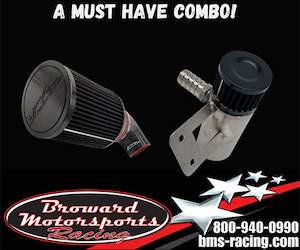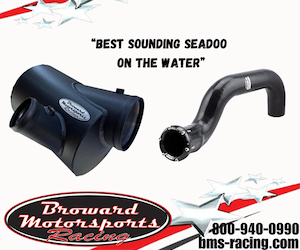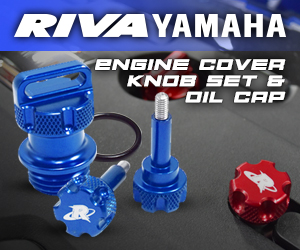
The Kawasaki SX-R 1500 has been around for a few years now. Racers and recreational riders alike have bolted on just about every aftermarket handling component available in an attempt to make the big beast handle as well as possible. The boat is powerful, and long and heavy, and has a fairly deep V-hull design. These features are great in some instances and the stock, plastic sponsons do their best to keep the ski stable and carving but there are some massive improvements to be had.
A quick internet search will bring up no less than six different manufacturers who offer rear sponsons for the SX-R 1500. Depending on what groups you ride with or who you listen to, it can be difficult to know which sponson is better and even more difficult to know why a certain sponson is better.

IPD Racing wanted to go a little deeper by extensively testing two of the most popular sponsons in a variety of conditions, using a variety of riders. We compared the sponsons offered from both JC Racing and Watercross of Texas and honestly the construction of these two sponsons couldn’t be more different from each other.
We completed our comparison over multiple days in two different locations including the world-famous Body Beach in Lake Havasu City, Arizona. We tested in both smooth and rough race-like conditions. During our test, we evaluated everything from product availability, fit and finish, top-speed, straight-line stability, and of course cornering.
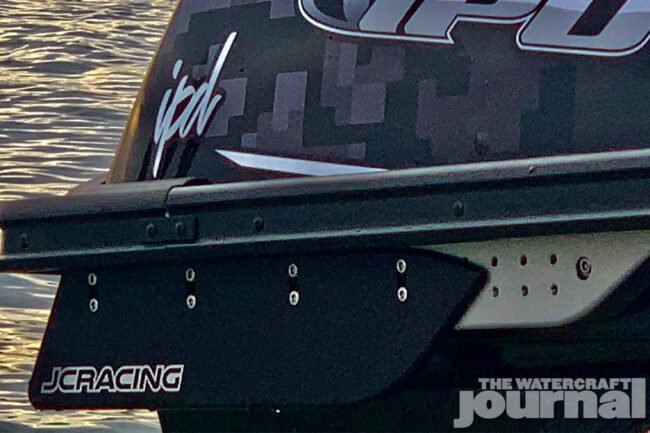
The JC Racing sponsons are CNC machined from 6061-T6 aluminum and include a separate backing plate. These sponsons offer an almost unlimited amount of positions available to tune the performance to your liking. JC Racing offers an original design “Gen 1” blade and a “Race” blade.
The “Gen 1” blades are designed around the recreational rider while the “Race” blade has more surface area and is designed to provide more aggressive handling. The JC Racing “Race” blades offer the ability to mount an ISJBA legal mid-sponson. This mid-sponson was not included in this test but will be reviewed in an upcoming article.

JC Racing uses 3D scan technology to input perfect hull information into CAD software. The results are parts that look great and fit perfectly. The backing plates are clear anodized and the blades themselves are black anodized. All JC Racing parts come with 316 marine-grade stainless hardware and instructions with some basic suggested settings.
As for performance, the JC sponsons were tested in all positions with the recommended setting providing the best grip and straight-line stability. The sponsons setting is really rider preference Having the sponson mounted all the way back will make the ski turn a bit wider, but it will increase the rear grip. Going further forward will change the pivot point of the ski more towards the center of the boat causing it to turn quicker.

In both cases, body positioning needs to be changed to compensate and to get the most from the different positions. With the sponsons all the way back, you can ride with a longer handle pole (if you have an adjustable pole) and hang more off the back of the ski. As you move it forward, you will want to change your body positioning to ride it more over the bars.
The WCOT sponsons are completely different. The backing plate is constructed from 6061-T6 aluminum while the sponsons are cast from 535 Almag (aluminum/magnesium alloy). This metal offers high strength and does not require heat to reach full strength. The WCOT sponson is then polished and clear lacquer coated to protect against oxidation. While these sponsons are fixed and do not offer any adjustment, they do have some carefully thought out and tested design features.

The sponsons are not flat like many others. Because of the way they are cast, they offer a contoured shape, allowing water to flow around and off of them. The angles have been designed to allow the ski to flow into and out of turns in a neutral manner so as not to wear out the rider. The sides of the sponson feature small indented channels that are designed to break up the laminar flow of the water. The sponsons are a little shorter than others and are reported to not touch the water at high speed.
All three sponsons were tested in both smooth glassy water and in windy, rough racecourse chop. All three sponsons were tested using riders of varying skill levels from a lightweight Pro/Ski GP Champion, to an older recreational rider. Our results were very similar for both manufacturers in the sense that the bad habits of the stock ski were immediately improved in both cases.
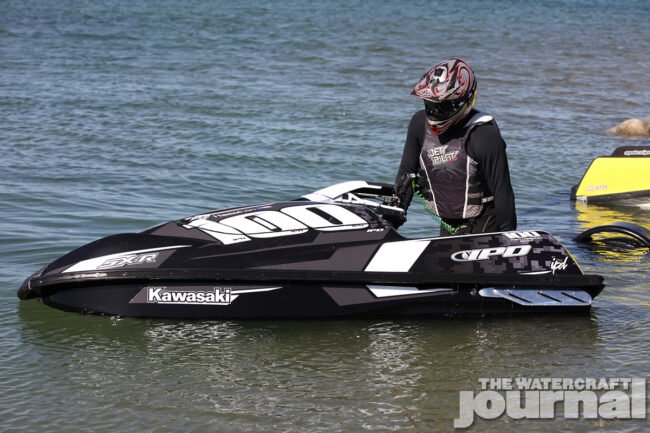
The stock ski can exhibit a strange lean-over in turns that is difficult to correct as well as some chine walk in smooth water. All three sponsons offered a much more secure, stable feeling in the rough high speed straights and provided the confidence to turn sharper and harder in the turns.
Performance wise, the JC Gen 1 sponson does not grip as much as the other two and is better suited to the recreational rider. The Gen 1 sponsons allow the SX-R to feel a little more playful and are a great choice for someone who doesn’t constantly ride buoys. As for the other two, I do not feel that there is a tremendous difference in cornering performance on a race course.
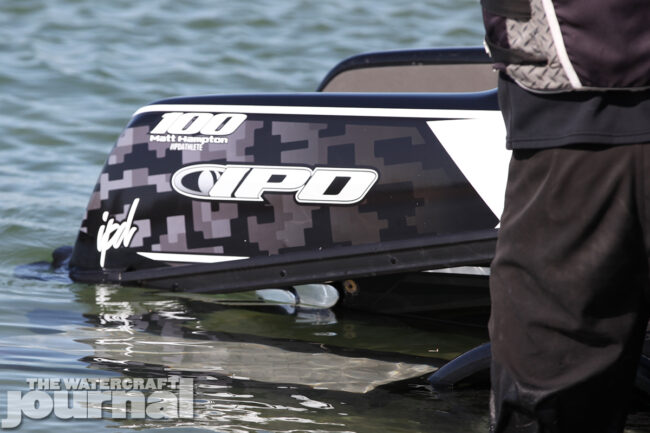
I feel that because of their adjustability, the JC Racing sponson’s have the ability to turn quicker and harder. The WCOT sponson seemed to provide a consistent feel that never did anything unexpected and because of the way they angle outward, I felt they provided excellent stability.
Price wise, the JC sponsons retail for just under $500 and the WCOT sponson retail for about $450. Both are manufactured in the USA and availability is comparable. Other sponson manufacturers have their parts made outside of the country and that is something to consider when looking for performance parts.

Really, the big separation comes down to two categories. For fit and finish, and almost unlimited adjustability, the JC Racing sponson has the edge with its beautifully constructed, CNC machined, anodized parts. For overall performance, the rider may want to consider a complete package to include an intake grate and a ride plate designed from the same manufacturer and in that category, WCOT has the edge.
Additionally, WCOT has been designing handling parts for jet skis for over 40 years so some credit has to be given for the design of their sponson. The final choice will be left to the individual rider but the consensus is that both massively improve the way the stock Kawasaki SX-R 1500 handles.

Speed Testing Results
All speed testing done with a Skat-Trak Intake Grate
OUT/IN
WCOT Sponsons
59.8/59.3
58.7/59.6
59.1/59.4
JCR Sponsons
59.4/60.0
58.6/59.4
60.0/59.3





















